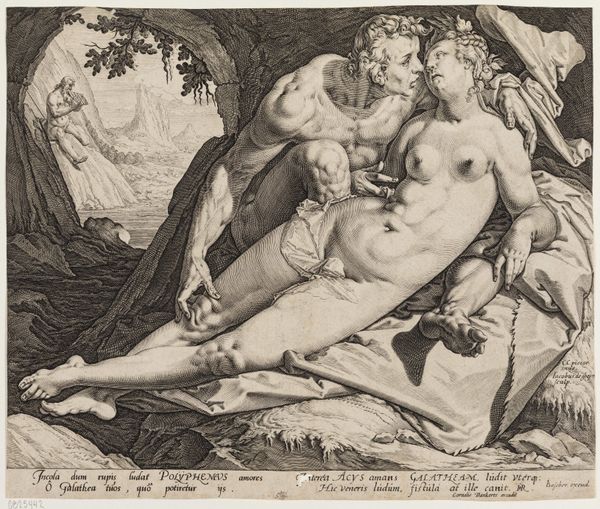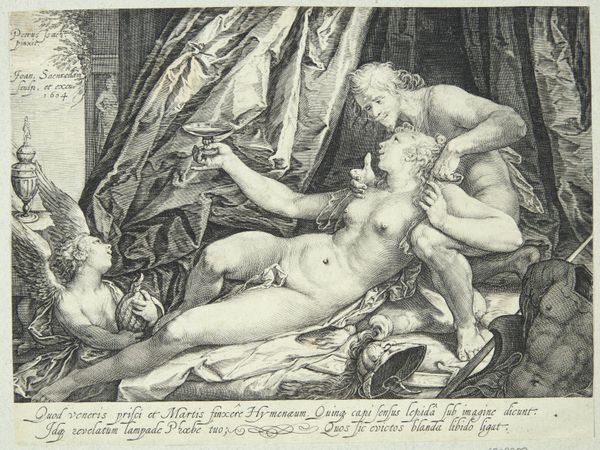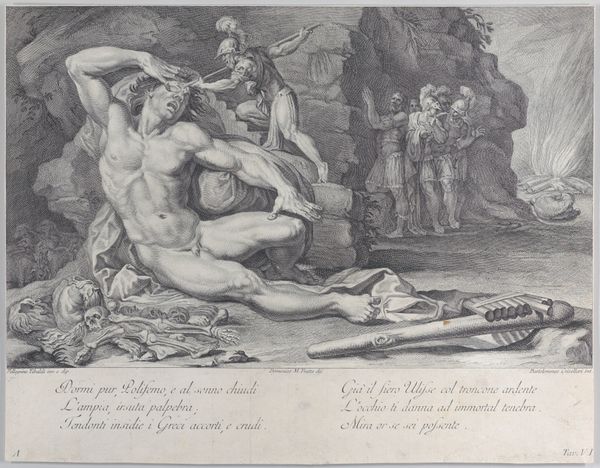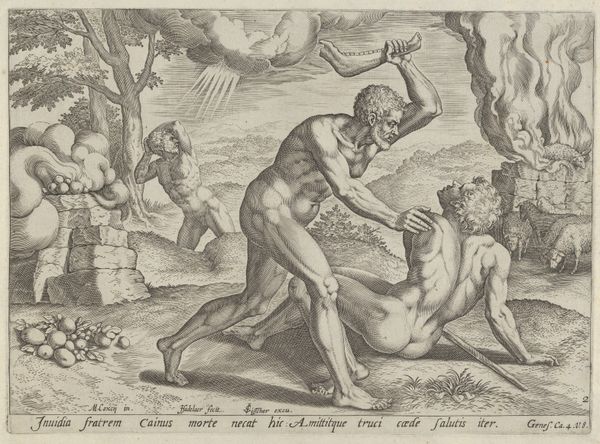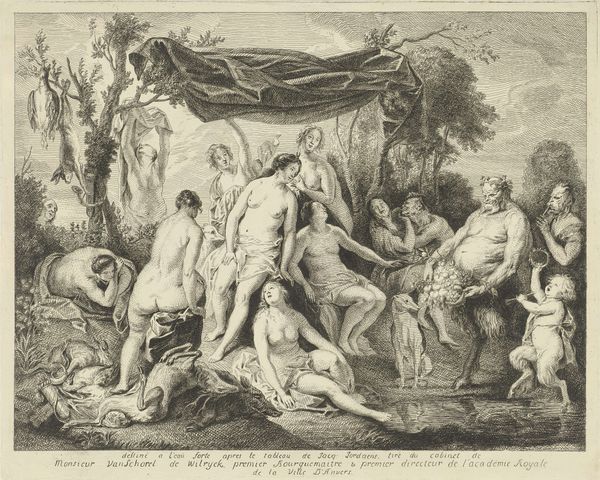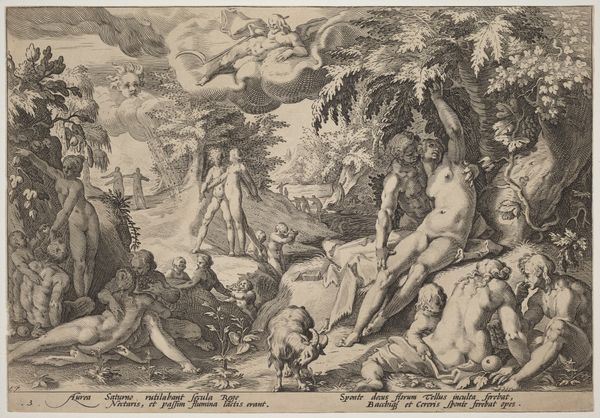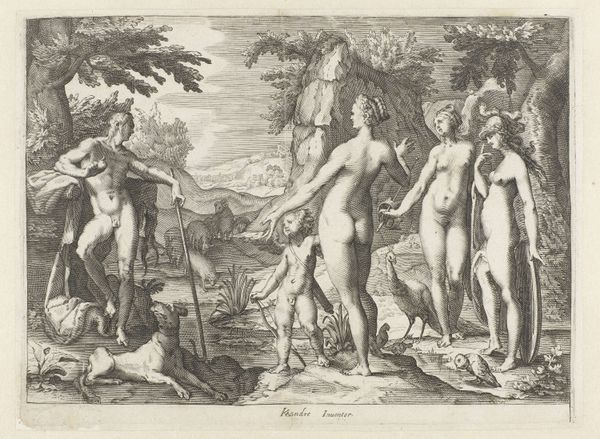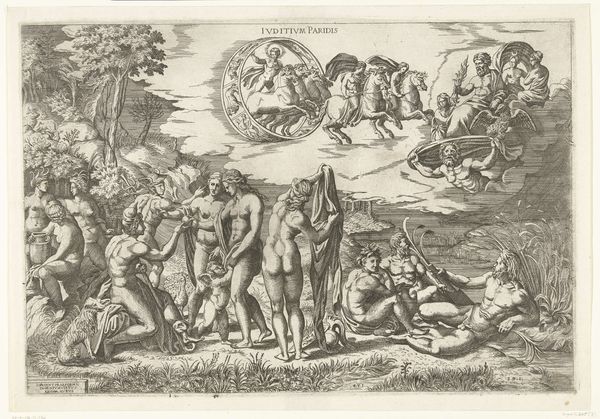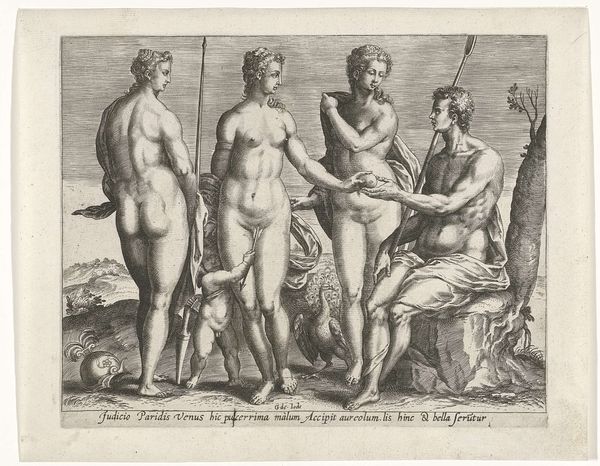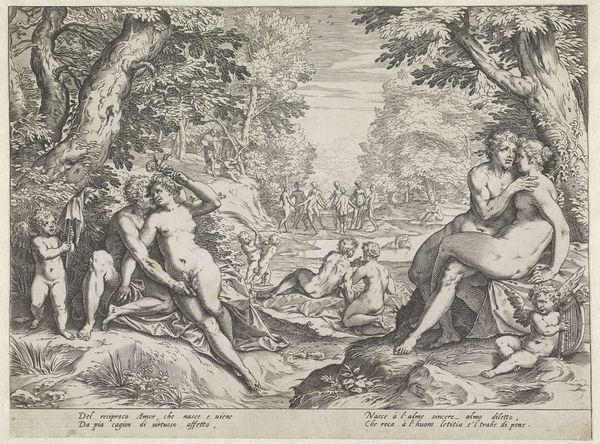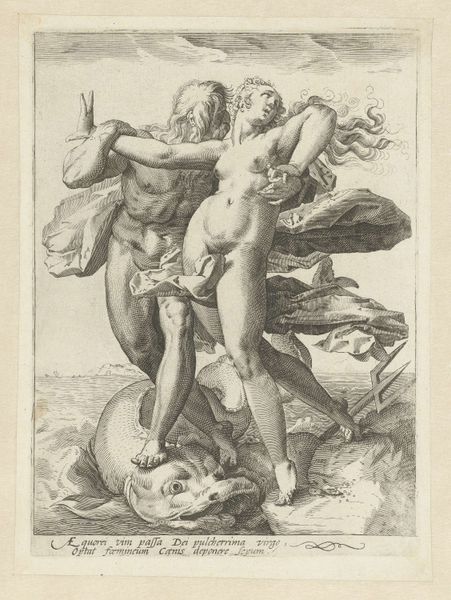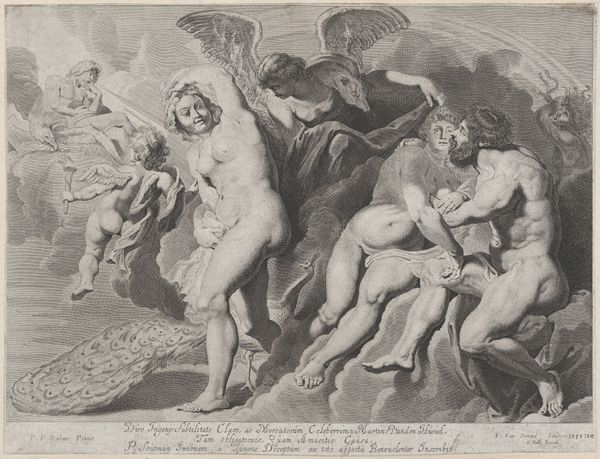
etching, engraving
#
allegory
#
baroque
#
pen drawing
#
etching
#
figuration
#
history-painting
#
nude
#
engraving
Dimensions: height 216 mm, width 294 mm
Copyright: Rijks Museum: Open Domain
Editor: This is "Liefde in het Gouden tijdperk" or "Love in the Golden Age" by Agostino Carracci, dating back to around 1589-1595. It's currently at the Rijksmuseum. Looking at the engraving and etching, I’m struck by the active poses of the figures; they’re interwoven in such an intense and, dare I say, performative way. What is your interpretation of this piece? Curator: The density of bodies and layering of erotic poses indeed creates a distinct impression, doesn't it? Beyond the immediate physicality, it's essential to unpack this 'Golden Age' allegory through the lens of 16th-century social structures and power dynamics. Think about how the male gaze operates here, how it positions the female body, and how ideas around reproduction intertwine with social constructs of desire. What statements, then, does Carracci’s construction of pleasure and abundance say about the power structures and the place of gender within that era? Editor: So you're saying the seemingly carefree abandon is actually a coded representation of power? It's interesting to consider that even idealized scenes like this were staged, shaped by the prevailing social norms, rather than some purely free expression of love. Curator: Precisely. The Golden Age is presented through the male gaze, which invites questions around access to pleasure and who controls that access. The abundance suggests both a hope and perhaps also a subtle anxiety around lineage and social control. What do you make of the cupids? Are they witnesses or active participants? Editor: I see them more as...commodities, reinforcing that the only goal in a partnership between two people would be procreation. And if that is true, one has to question whether either party has any autonomy at all, particularly the woman. Curator: Your analysis of how these visual choices are used to suggest that production-line style manufacturing of new citizens aligns with a much darker possible statement. And so, by analyzing this popular artwork using current perspectives and social mores, we are actually able to discuss how different times have various views. Editor: That is thought-provoking. Looking at this artwork, I now see the need to think about who this 'Golden Age' was *actually* golden for, and to recognize the voices perhaps left out of the narrative.
Comments
No comments
Be the first to comment and join the conversation on the ultimate creative platform.

